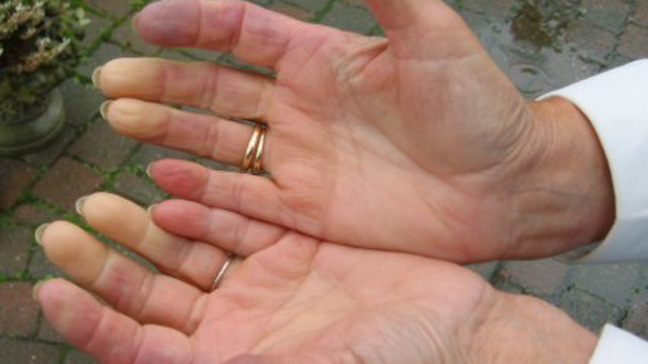SCLERODERMA

What is Scleroderma?
Scleroderma is a chronic connective tissue disorder that has skin manifestations resulting in thickened, hard skin. In addition, the disorder can have systemic involvement where other internal organs like the lungs, heart, and GI tract are affected by inflammation and hardening. When internal organs are involved the term “systemic scleroderma” is used. In addition, scleroderma can be a component of other syndromes including the CREST syndrome. The age of onset of scleroderma is between 30 and 50 years old, it occurs more in females than males, and overall there are 20 cases per million people in the U.S. population.
What causes Scleroderma?
The cause of scleroderma is unknown. It is thought that perhaps a primary event in causing the disorder is injury to a blood vessel which is followed by fibrosis and overproduction of collagen by the fibroblasts naturally found in the skin which results in the characteristic thickened, hard skin.
What does Scleroderma look like clinically?
Patients with scleroderma usually present with generalized or local skin sclerosis or hardening. Skin sclerosis causes the skin to be hard to palpation and appear waxy with decreased folds and wrinkles. In addition, the raynaud phenomenon is usually present. This is a vasospasm disorder which causes the digits to become white in response to cold or stress.
What is the treatment for Scleroderma?
There is currently no treatment specific for scleroderma. There are therapies which are aimed at combating complications including: corticosteroids, immune suppressing medications, and nonsteroidal anti-inflammatory drugs. Physical therapy is also often helpful in maintaining flexibility of the skin.


